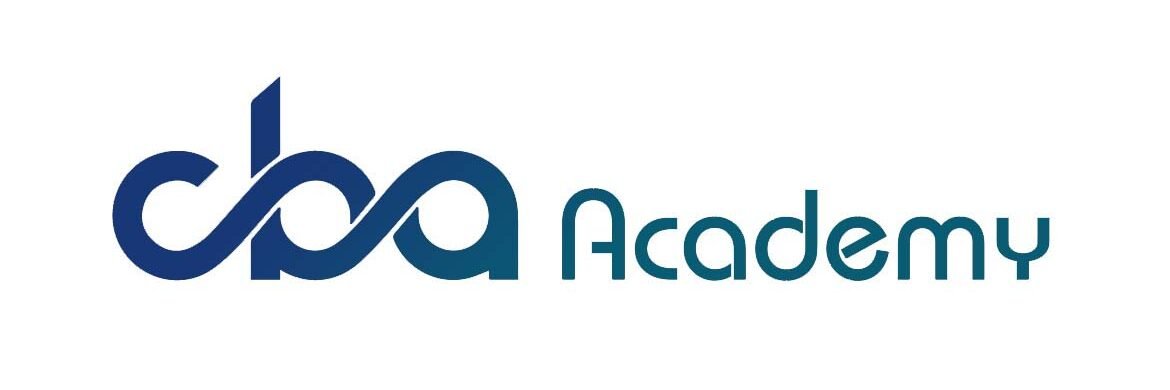A resume is more than just a list of jobs; it’s a marketing tool designed to showcase your skills, experiences, and accomplishments in a way that grabs the attention of potential employers. A well-crafted resume answers the question, “How do I make a resume that effectively highlights my qualifications and makes me a standout candidate?”
In this guide, we’ll explore how to build a resume from scratch, offering simple and practical tips for each step of the process. We’ll cover the essential components, formatting tips, and strategies to tailor your resume for different job opportunities. By focusing on how to create a resume that is both clear and compelling, you’ll be better equipped to land the job you want.
Let’s dive into the essentials of how to make a resume that not only meets but exceeds employer expectations.
Basic Parts: How Do I Make a Resume?

1. Contact Information
How Do I Make a Resume with the Right Contact Information?
What to Include: Full Name, Phone Number, Email Address, LinkedIn Profile (optional)
Why It Matters: Your contact information should be clear and easy to find. It’s the first step in ensuring employers can reach you easily.
How do I make a resume that includes effective contact details? If including a LinkedIn profile, ensure it reflects relevant keywords related to your industry.
2. Professional Summary or Objective
How Do I Make a Resume with a Strong Professional Summary?
What to Include: A brief statement of your career goals and key qualifications
Why It Matters: This section should quickly convey your professional background and career objectives.
How do I make a resume that captures attention with my summary? Use industry-specific keywords and phrases that match the job description to make your resume stand out to both hiring managers and Applicant Tracking Systems (ATS).
3. Work History
How Do I Make a Resume That Effectively Showcases My Work History?
What to Include: Job Titles, Company Names, Dates of Employment, Responsibilities, and Achievements
Why It Matters: Your work history demonstrates your experience and accomplishments.
How do I make a resume that highlights my work history effectively? Incorporate keywords from the job description to align your experience with what employers are seeking.
4. Education
How Do I Make a Resume with a Strong Education Section?
What to Include: Degree(s) Earned, Institution(s) Attended, Graduation Date(s)
Why It Matters: This section validates your educational background and relevant knowledge.
How do I make a resume that highlights my education effectively? List your most recent or relevant degrees and mention any coursework or honors that align with the job requirements.
5. Skills
How Do I Make a Resume That Effectively Showcases My Skills?
What to Include: Technical Skills (e.g., software proficiency), Soft Skills (e.g., leadership, communication)
Why It Matters: Skills demonstrate your capability to perform the job effectively.
How do I make a resume that highlights my skills accurately? Tailor this section to match the job description and use specific keywords and phrases that reflect the skills required for the position.
6. Certifications and Awards
How Do I Make a Resume That Includes Certifications and Awards?
What to Include: Relevant Certifications (e.g., PMP, CPA), Awards and Recognitions
Why It Matters: Certifications and awards validate your expertise and can set you apart from other candidates.
How do I make a resume that stands out with certifications and awards? Include keywords related to your certifications and awards to enhance your resume’s visibility in ATS searches and to highlight your additional qualifications.
7. Additional Sections
How Do I Make a Resume with Additional Sections?
What to Include: Projects, Volunteer Experience, Languages
Why It Matters: These sections can provide a fuller picture of your skills and experiences.
How do I make a resume that incorporates additional sections effectively? Use relevant keywords and phrases in these sections to boost your resume’s searchability and make it more appealing to recruiters.
Formatting Your Resume: How Do I Make a Resume Look Good?

When it comes to job applications, the formatting of your resume can make a significant difference. So, how do I make a resume look good and stand out? Proper formatting not only enhances readability but also ensures your resume makes a professional impression. Here’s a guide on formatting your resume to answer the question, “How do I make a resume look good?”
1. Choose a Clean Layout
How Do I Make a Resume Look Good with a Clean Layout?
What to Include: Use a simple, professional design with clear headings and ample white space.
Why It Matters: A clean layout ensures that your resume is easy to read and visually appealing.
How do I make a resume look good with layout choices? Opt for a layout that uses a clear font, consistent formatting, and avoids clutter.
2. Use Professional Fonts
How Do I Make a Resume Look Good with the Right Fonts?
What to Include: Choose fonts like Arial, Calibri, or Times New Roman in a size between 10 and 12 points.
Why It Matters: Professional fonts ensure readability and give your resume a polished appearance.
How do I make a resume look good with font selection? Avoid using fancy or overly decorative fonts. Stick to standard fonts that enhance readability and maintain a professional tone.
3. Consistent Formatting
How Do I Make a Resume Look Good with Consistent Formatting?
What to Include: Use uniform font sizes, colors, and bullet points throughout your resume.
Why It Matters: Consistency in formatting makes your resume appear organized and professional.
How do I make a resume look good with formatting consistency? Apply the same formatting style to each section and use bold or italics sparingly to highlight important information.
4. Strategic Use of White Space
How Do I Make a Resume Look Good with White Space?
What to Include: Include margins of at least 0.5 inches and use spacing between sections.
Why It Matters: White space improves readability and prevents your resume from looking crowded.
How do I make a resume look good with effective use of white space? Ensure that there’s enough space around text blocks and between sections. This makes your resume easier to navigate and visually appealing.
5. Highlight Key Sections
How Do I Make a Resume Look Good by Highlighting Key Sections?
What to Include: Use bold or underlined text for headings like “Work History” or “Education.”
Why It Matters: Highlighting key sections helps employers quickly find important information.
How do I make a resume look good with section highlights? Ensure that section headings are clear and distinct. This helps in organizing your resume and guiding the reader’s eye to critical areas.
6. Include Bullet Points for Achievements
How Do I Make a Resume Look Good with Bullet Points?
What to Include: Use bullet points to list responsibilities and achievements.
Why It Matters: Bullet points make information easier to scan and read.
How do I make a resume look good with bullet points? Use concise bullet points to highlight your accomplishments and responsibilities. This format helps in presenting information clearly and effectively.
7. Use a Professional File Format
How Do I Make a Resume Look Good with the Right File Format?
What to Include: Save your resume as a PDF to preserve formatting.
Why It Matters: A PDF ensures that your resume maintains its layout and is easily accessible by recruiters.
How do I make a resume look good with file format choices? Avoid submitting resumes in formats that might alter your formatting, like Word documents. PDFs are widely accepted and maintain your resume’s appearance.
How Do I Make a Resume That Reflects My Unique Strengths?

Crafting a resume that truly reflects your unique strengths can set you apart from other candidates. So, how do I make a resume that highlights my individual talents and experiences? Here’s a guide to showcasing your distinctive qualities and skills to answer the question, “How do I make a resume that reflects my unique strengths?”
1. Identify Your Core Strengths
How Do I Make a Resume That Highlights My Core Strengths?
What to Include: List your top skills, accomplishments, and personal attributes that set you apart.
Why It Matters: Clearly identifying your core strengths helps you emphasize what makes you unique and valuable to potential employers.
How do I make a resume that effectively showcases my strengths? Start by reflecting on your past achievements and skills. Choose the ones that align with the job you’re applying for and demonstrate how they differentiate you from other candidates.
2. Tailor Your Professional Summary
How Do I Make a Resume That Reflects My Unique Strengths in the Summary?
What to Include: Write a compelling professional summary that highlights your unique strengths and career goals.
Why It Matters: The professional summary sets the tone for your resume and should succinctly present what makes you stand out.
How do I make a resume that captures my unique strengths in the summary? Use specific examples and keywords related to your strengths. Tailor this section to reflect your individual achievements and how they relate to the position you’re seeking.
3. Emphasize Key Achievements
How Do I Make a Resume That Showcases My Achievements?
What to Include: Highlight specific accomplishments that demonstrate your strengths.
Why It Matters: Key achievements provide concrete evidence of your abilities and impact.
How do I make a resume that effectively highlights my achievements? Use quantifiable results and detailed descriptions to illustrate how your strengths contributed to past successes. This adds credibility to your claims and makes your resume more compelling.
4. Showcase Unique Skills
How Do I Make a Resume That Highlights My Unique Skills?
What to Include: List both technical and soft skills that are uncommon or particularly strong in your field.
Why It Matters: Unique skills can set you apart from other candidates and add value to the job you’re applying for.
How do I make a resume that showcases my unique skills effectively? Focus on skills that align with the job description but also highlight those that are distinctive to your background. Be specific about how these skills have benefited previous employers.
5. Include Personalized Sections
How Do I Make a Resume That Reflects My Strengths with Personalized Sections?
What to Include: Add sections like “Projects,” “Volunteer Work,” or “Certifications” that showcase your unique contributions and experiences.
Why It Matters: Personalized sections provide additional context about your strengths and interests.
How do I make a resume that includes personalized sections effectively? Choose sections that best reflect your unique strengths and experiences. Tailor these sections to demonstrate how your unique qualities have led to impactful results.
How Do I Make a Resume That Adapts to Different Job Markets?

Creating a versatile resume that can adapt to various job markets is essential for maximizing your job search success. So, how do I make a resume that effectively adapts to different job markets? Here’s a guide to help you tailor your resume for diverse job environments and industries.
1. Research Job Market Trends
How Do I Make a Resume That Adapts to Different Job Markets Through Research?
What to Include: Stay informed about current trends and demands in the job markets you’re targeting.
Why It Matters: Understanding market trends helps you tailor your resume to align with the skills and qualifications most sought after by employers in different industries.
How do I make a resume that reflects current job market trends? Research industry-specific requirements and incorporate relevant keywords and skills into your resume to ensure it meets the current demands.
2. Customize Your Professional Summary
How Do I Make a Resume That Adapts to Different Job Markets with a Customized Summary?
What to Include: Tailor your professional summary to highlight the skills and experiences most relevant to each job market.
Why It Matters: A customized summary quickly demonstrates how your qualifications align with the specific needs of the job market you’re targeting.
How do I make a resume that showcases my adaptability in the summary? Modify your summary to reflect the key attributes and achievements that are most relevant to each market, ensuring it resonates with potential employers in various fields.
3. Highlight Relevant Skills
How Do I Make a Resume That Adapts to Different Job Markets by Highlighting Relevant Skills?
What to Include: Focus on skills that are in high demand within each specific job market.
Why It Matters: Highlighting relevant skills ensures that your resume appeals to employers looking for specific expertise.
How do I make a resume that effectively highlights relevant skills? Identify and emphasize skills that are particularly valued in each job market. Use industry-specific terminology to align with the expectations of different sectors.
4. Adapt Your Work History
How Do I Make a Resume That Adapts to Different Job Markets by Adapting My Work History?
What to Include: Emphasize different aspects of your work history based on the requirements of each job market.
Why It Matters: Tailoring your work history to each market helps to showcase the most relevant experiences and achievements.
How do I make a resume that effectively adapts my work history? Adjust the focus of your work history section to highlight experiences and accomplishments that align with the job market you’re targeting. This may involve reordering or rephrasing details to better fit the specific industry.
5. Use Industry-Specific Keywords
How Do I Make a Resume That Adapts to Different Job Markets with Industry-Specific Keywords?
What to Include: Incorporate keywords and phrases that are specific to each job market and industry.
Why It Matters: Keywords help your resume pass through Applicant Tracking Systems (ATS) and attract the attention of hiring managers.
How do I make a resume that effectively uses industry-specific keywords? Analyze job descriptions for each market you’re targeting and integrate relevant keywords throughout your resume to improve its chances of being noticed.
How Do I Make a Resume That Stays Relevant?

Ensuring your resume remains relevant in a constantly evolving job market is key to staying competitive. So, how do I make a resume that stays relevant? Here’s a guide to keeping your resume up-to-date and aligned with current industry standards and trends.
1. Regularly Update Your Resume
How Do I Make a Resume That Stays Relevant with Regular Updates?
What to Include: Periodically review and revise your resume to include recent job experiences, skills, and accomplishments.
Why It Matters: Regular updates ensure your resume reflects your most current qualifications and achievements.
How do I make a resume that remains relevant through regular updates? Set a schedule to review and update your resume every few months. Incorporate new experiences, skills, and any changes in your career goals to keep your resume fresh and accurate.
2. Reflect Current Industry Trends
How Do I Make a Resume That Stays Relevant by Reflecting Industry Trends?
What to Include: Integrate industry-specific trends, technologies, and skills that are currently in demand.
Why It Matters: Aligning your resume with industry trends shows that you are aware of and engaged with the latest developments in your field.
How do I make a resume that highlights current industry trends? Research industry reports and job postings to identify key trends. Update your resume to include relevant skills and technologies that are gaining traction in your field.
3. Tailor Your Resume for Each Application
How Do I Make a Resume That Stays Relevant by Tailoring It for Each Job Application?
What to Include: Customize your resume for each job application to highlight experiences and skills that match the specific job description.
Why It Matters: Tailoring your resume ensures that it aligns with the requirements of each job, increasing your chances of catching the employer’s attention.
How do I make a resume that effectively adapts to each application? Carefully read job descriptions and adjust your resume to emphasize the qualifications and experiences most relevant to each position.
4. Highlight Recent Achievements
How Do I Make a Resume That Stays Relevant by Highlighting Recent Achievements?
What to Include: Focus on your most recent and significant achievements to demonstrate your current capabilities and impact.
Why It Matters: Recent achievements provide a snapshot of your current skills and successes, making your resume more relevant to prospective employers.
How do I make a resume that emphasizes recent achievements? Include accomplishments from your most recent roles and projects. Use quantifiable results to show your impact and relevance.
5. Use Modern Resume Formats
How Do I Make a Resume That Stays Relevant with Modern Formats?
What to Include: Utilize contemporary resume formats that are visually appealing and easy to read, such as clean, professional layouts or modern designs.
Why It Matters: A modern format ensures that your resume is in line with current resume design trends and enhances readability.
How do I make a resume that employs modern formats effectively? Choose a format that balances professionalism with current design trends. Avoid outdated styles or excessive graphics that can detract from the content.
Additional Tips: How Do I Make a Resume That Really Stands Out?

Creating a resume that stands out is crucial for capturing the attention of hiring managers and setting yourself apart from other candidates. So, how do I make a resume that really stands out? Here’s a guide to help you design a resume that highlights your strengths and grabs attention.
1. Start with a Strong Professional Summary
How Do I Make a Resume That Really Stands Out with a Strong Professional Summary?
What to Include: Craft a compelling professional summary that highlights your key achievements, skills, and career goals.
Why It Matters: A strong professional summary grabs attention right away and sets the tone for the rest of your resume.
How do I make a resume that stands out with my summary? Focus on your unique selling points and tailor your summary to align with the specific job you’re applying for. Use impactful language and highlight your most significant accomplishments.
2. Showcase Unique Achievements
How Do I Make a Resume That Really Stands Out by Showcasing Unique Achievements?
What to Include: Highlight specific achievements that demonstrate your impact and value in previous roles.
Why It Matters: Unique achievements provide evidence of your capabilities and make your resume memorable.
How do I make a resume that stands out with my achievements? Use quantifiable results and detailed examples to showcase how your actions led to significant outcomes. This helps potential employers see the real value you can bring to their organization.
3. Use a Creative Yet Professional Design
How Do I Make a Resume That Really Stands Out with a Creative Design?
What to Include: Incorporate a modern and visually appealing design that aligns with your industry while maintaining professionalism.
Why It Matters: A creative design can make your resume more engaging and help you stand out in a stack of applications.
How do I make a resume that stands out with design elements? Choose a design that reflects your personality and profession. Use color, layout, and typography to create a visually appealing resume that remains easy to read.
4. Tailor Your Resume for Each Job Application
How Do I Make a Resume That Really Stands Out by Tailoring It for Each Job?
What to Include: Customize your resume to highlight the skills and experiences most relevant to each specific job application.
Why It Matters: Tailoring your resume ensures that it addresses the specific needs and preferences of each employer.
How do I make a resume that stands out with customization? Carefully review the job description and adjust your resume to emphasize the qualifications and experiences that match the requirements of each position.
5. Highlight Relevant Skills and Expertise
How Do I Make a Resume That Really Stands Out by Highlighting Relevant Skills?
What to Include: Feature skills that are in high demand within your industry and relevant to the job you’re applying for.
Why It Matters: Highlighting relevant skills demonstrates that you possess the capabilities sought by employers.
How do I make a resume that stands out with my skills? Use specific examples and keywords related to the job. Show how your skills have been applied successfully in previous roles.
Common Mistakes: How Do I Make a Resume That Avoids Common Pitfalls?

Creating a resume that effectively avoids common pitfalls is essential for making a positive impression on potential employers. So, how do I make a resume that avoids common pitfalls? Here’s a guide to help you navigate and avoid the typical mistakes that can detract from your resume’s effectiveness.
1. Avoid Generic Statements
How Do I Make a Resume That Avoids Common Pitfalls by Avoiding Generic Statements?
What to Include: Use specific and detailed descriptions of your skills, achievements, and experiences rather than vague or generic statements.
Why It Matters: Generic statements can make your resume blend in with others and fail to capture the unique value you bring.
How do I make a resume that avoids generic statements? Focus on providing concrete examples and quantifiable results to highlight your accomplishments. This specificity helps to differentiate you from other candidates and demonstrates your unique contributions.
2. Steer Clear of Spelling and Grammar Errors
How Do I Make a Resume That Avoids Common Pitfalls by Steering Clear of Errors?
What to Include: Ensure your resume is free from spelling and grammar mistakes.
Why It Matters: Errors can undermine your professionalism and attention to detail, potentially harming your chances of being considered.
How do I make a resume that avoids spelling and grammar errors? Use grammar checking tools and read several times. Additionally, have a friend or colleague review it to catch any mistakes you might have missed.
3. Avoid Irrelevant Information
How Do I Make a Resume That Avoids Common Pitfalls by Avoiding Irrelevant Information?
What to Include: Focus on including information that is directly relevant to the job you are applying for.
Why It Matters: Irrelevant details can clutter your resume and distract from your key qualifications and achievements.
How do I make a resume that avoids including irrelevant information? Tailor your resume to each job application by emphasizing experiences and skills that align with the job description. Remove any details that do not add value to your application.
4. Steer Clear of Outdated Information
How Do I Make a Resume That Avoids Common Pitfalls by Avoiding Outdated Information?
What to Include: Update your resume to include your most recent experiences and skills while removing outdated information.
Why It Matters: Outdated information can make your resume seem less relevant and fail to reflect your current capabilities.
How do I make a resume that avoids outdated information? Regularly review and revise your resume to incorporate recent achievements, new skills, and updated job experiences. Ensure that all information is current and applicable to the roles you’re targeting.
5. Avoid Using an Overly Complex Layout
How Do I Make a Resume That Avoids Common Pitfalls by Avoiding Complex Layouts?
What to Include: Use a clean, simple layout that is easy to read and navigate.
Why It Matters: An overly complex layout can make your resume difficult to read and may cause important information to be overlooked.
How do I make a resume that avoids complex layouts? Stick to a straightforward design with clear headings, bullet points, and consistent formatting. Ensure that your resume is well-organized and visually accessible.
Conclusion
In conclusion, making a resume that drives career success involves more than just listing your job history. It requires a clear presentation of your skills, achievements, and professional growth. By incorporating tips for showcasing your unique strengths, adapting to different job markets, and reflecting on your career progression, you create a compelling resume that stands out to employers.
A great resume not only answers “How do I make a resume?” but also clearly communicates your value and aligns with your career goals. With a well-crafted resume, you’re well-positioned to attract attention, secure interviews, and ultimately land the job you’ve been striving for.
Remember, your resume is a powerful tool in your career journey. By applying these strategies, you can create a resume that opens doors to exciting opportunities and supports your professional aspirations. Good luck with your job search, and may your resume lead you to the success you’re aiming for!
For more details, reach out: @contact


